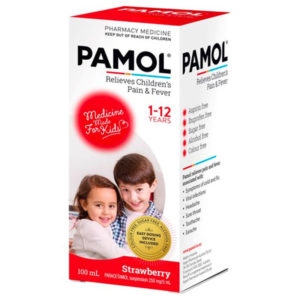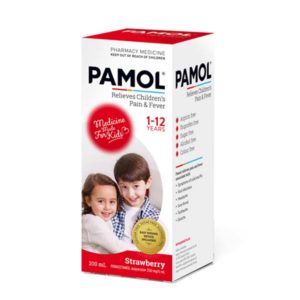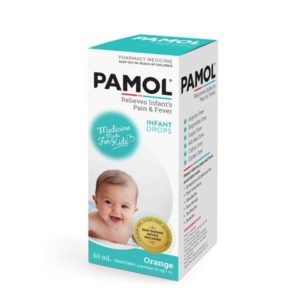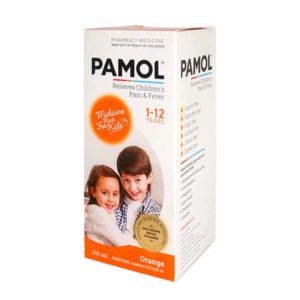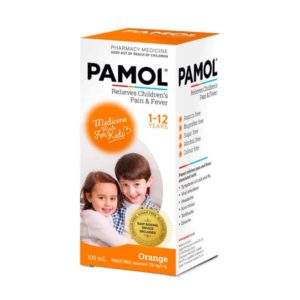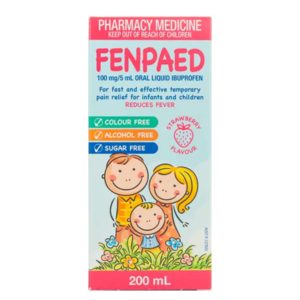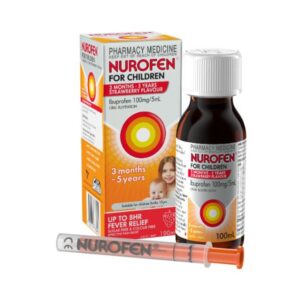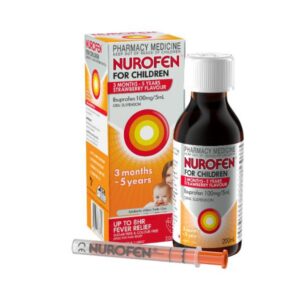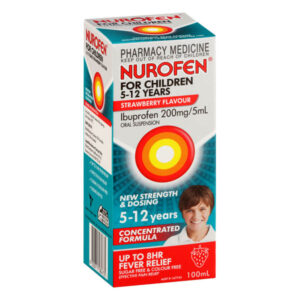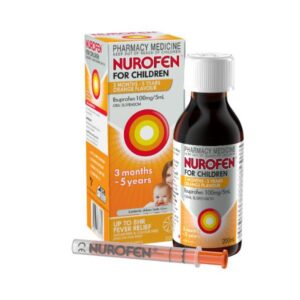Pain and fever are two of the most common symptoms experienced by individuals of all ages. If your child is miserable because of fever or pain, you can ask a pharmacist for advice on medicines for children. Pharmacists can provide you medicines in liquid form, prepared especially for children.
It is important to understand how to calculate the correct dose of medication for your child to ensure you are safely managing their symptoms.

Paracetamol liquid is the most common medicine used for relieving children’s pain or fever. Ibuprofen liquid is also available, this has anti-inflammatory properties. These medicines can help to make your child more comfortable. You must follow dosage instructions carefully.
Calculating the correct medicine dose for children is crucial to ensure their safety and effectiveness of the treatment. Always ask your doctor or pharmacist if you are unsure. To calculate the appropriate dose of paracetamol or Ibuprofen for a child:
Weigh your child – the appropriate dose for your child is based on your child’s body weight (NOT AGE)
Measure Correctly – it is important to use an accurate tool like an oral syringe to measure each dose (not a kitchen spoon)
Follow dose frequency – always double check the dosing frequency of a medicine and wait the recommended time between each dose. Check if you child still needs the medicine before each dose.
Daily dose limit – never exceed the recommended maximum number of doses for a 24 hour period for the medicine.
Check medicine ingredients – Check other medicines your child is taking for paracetamol or ibuprofen to make sure you don’t accidentally exceed the recommended dose.
A medicine dose tracker is a helpful tool for caregivers to effectively manage medication administration, especially for children. By using a dose tracker, caregivers can maintain a clear and organized record of when each dose should be administered, reducing the risk of missed doses or accidental overdosing. This is particularly helpful when more than one caregiver is involved in the process.
To use the tracker, start by writing down the correct dose. This can either be the prescribed amount from the label or the dose that is indicated on the medicine’s packaging (according to weight).
The medicine dose tracker provides a space to write the date and the measured temperature.
After administering each dose, write down the dosing time on the tracker. This simple system ensures accurate medicine management.
A baby under three months with even a mild fever should be taken to the doctor.
A baby between three and six months with a high or very high fever (anything over 39 ºC) should also be seen a doctor.
For older children, it‘s important to look at other symptoms and the overall state of the child’s health. Some mild illnesses can cause very high fevers, while severe illnesses may result in only a mild fever.
You must also take your child to the doctor or emergency department if they:
Learn more about pain and fever: https://zoompharmacy.co.nz/pain-and-fever/
How to use a thermometer: https://zoompharmacy.co.nz/thermometer-nz-zoom-pharmacy/
